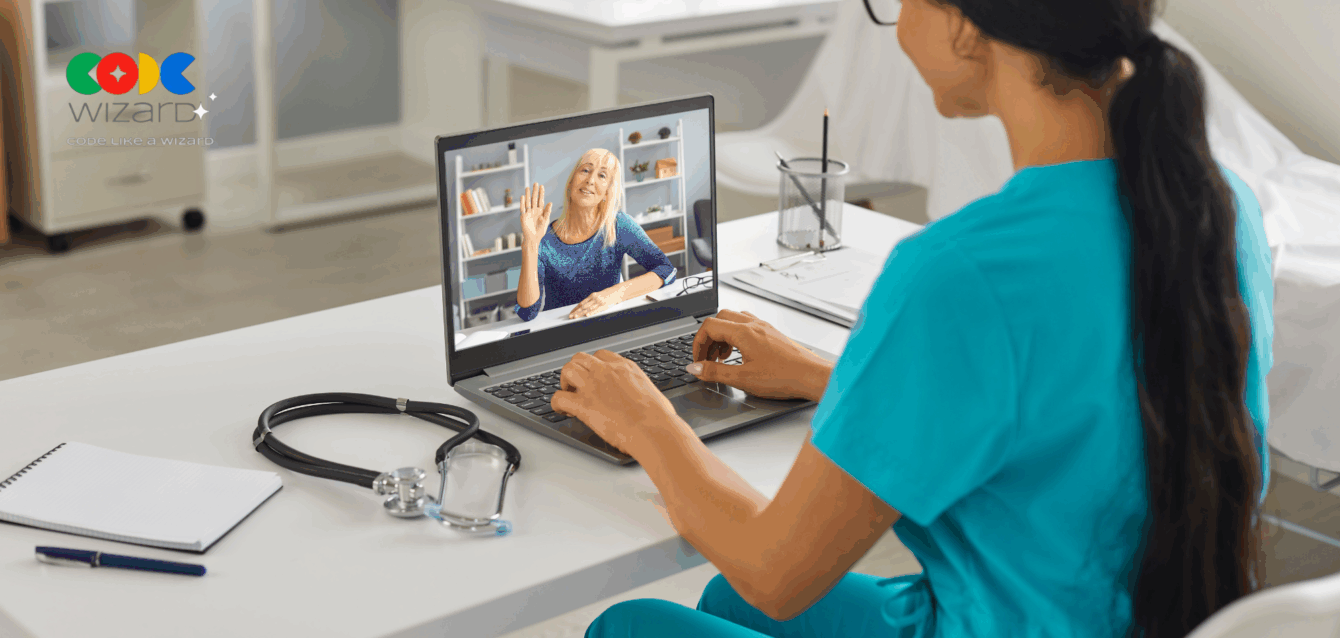How Video Consultations in Healthcare Are Becoming More Patient-Centric
Introduction
In 2025, India’s healthcare landscape is undergoing a remarkable transformation. With growing urbanization, population demands, and digital adoption, care delivery is no longer just about in-person hospital visits. It is about putting patients first, wherever they are.
One powerful enabler of this shift is video support technology. It is helping care providers reach people faster, respond better, and deliver more personal, connected, and meaningful care experiences.
From an AI code automation company like Code Wizard, this evolution is both inspiring and exciting. Our tools are being used by healthtech teams to build, deploy, and manage scalable, humanized digital solutions that truly center around patients.
Let’s dive into how healthcare in India is becoming more patient-focused with the help of video support – and where we are heading next.
The Rise of Video Support in Indian Healthcare
Not long ago, video calls in healthcare were rare. Most consultations happened in person, often after long waits or travel. But things have changed.
Especially after COVID-19, video consultations became a new norm. Now in 2025, India’s digital infrastructure has improved. Most patients, even in Tier 2 and Tier 3 cities, can access doctors via video.
Government initiatives like Ayushman Bharat Digital Mission (ABDM) have encouraged digital health services. Hospitals and startups alike are integrating video consultation modules into their platforms.
Here’s why this matters: It is no longer about tech adoption for tech’s sake. Video support is making care more patient-centric – meaning, care that is respectful of, and responsive to, individual preferences and needs.
What Does Patient-Centric Care Really Mean?
Patient-centric care is not just a buzzword. It means:
- Patients feel heard, informed, and involved.
- They get timely access to help.
- They can communicate in ways that suit their lifestyle.
- Care is tailored to their personal health needs.
In short, it’s about empowering patients to be active participants in their health journey. And video support is a huge part of that empowerment.
How Video Support is Reshaping Patient Care
Improved Access to Healthcare
Many people in India still live far from urban healthcare centers. In-person visits mean travel, time off work, and expense. But video calls break the barrier of distance.
Patients can now consult a specialist in another city or state from their homes. A diabetic patient in rural Karnataka can get dietary advice from a top endocrinologist in Bangalore without traveling.
Real-Time Doctor-Patient Interaction
Unlike static chat apps or email-based responses, video calls enable real-time, face-to-face interactions. This builds trust. Patients can describe symptoms more clearly, and doctors can see visual cues like rashes or swelling.
This level of interaction makes care more personal. Patients feel understood, not just diagnosed.
Personalized Follow-Up and Monitoring
Video consultations are great not just for first-time care, but also for follow-ups and chronic condition monitoring.
Doctors can regularly check on recovery post-surgery. Patients with heart disease or asthma can report symptoms and get timely medication adjustments – without visiting the clinic every time.
Collaborative Treatment Planning
Patient-centric care involves more than one doctor. For example, a cancer patient might need an oncologist, a nutritionist, and a physiotherapist.
Video support enables doctor-to-doctor video calls, where physicians can discuss a patient’s case together. This leads to holistic treatment plans and better outcomes.
The Role of Code Wizard in Healthcare Transformation
At Code Wizard, we believe in building digital infrastructure that improves lives. Our AI-driven code generation tools help healthtech startups and hospital IT teams develop robust, secure, and scalable video consultation platforms.
With minimal coding effort, our clients can:
- Integrate HIPAA-compliant video modules
- Customize user interfaces for patient ease
- Automate appointment reminders and follow-ups
- Deploy smart dashboards for physicians
By using our pro-code tools, developers speed up delivery and focus on human-centered design instead of reinventing the wheel.
Challenges and Considerations
Of course, video support is not a magic fix. There are some challenges to keep in mind:
- Internet connectivity: While better, not all areas have stable internet.
- Digital literacy: Older patients or those with limited tech access may struggle.
- Privacy and compliance: Data protection is crucial for patient trust.
At Code Wizard, we help clients overcome these issues with adaptive designs, encrypted communication, and modular tech architecture that grows with the user base.
Future Outlook: Patient-Centricity Powered by AI & Video Tech
Looking ahead, video support will not stay the same. It will evolve with AI augmentation, better data integration, and smoother UX.
Imagine this:
- A patient books a video consult.
- An AI assistant summarizes past health history.
- The doctor joins with real-time insights on vitals and medication history.
- Post-call, a chatbot sends care instructions and reminders.
This is not a distant dream. It is already being built. And Code Wizard is enabling these advancements through smart, AI-enhanced code automation platforms.
FAQs
1. Is video consultation legal and regulated in India?
Yes, the Telemedicine Practice Guidelines released by the Ministry of Health and Family Welfare (2020) allow video consultations within clear frameworks.
2. What platforms are used for video consultations in India?
Many healthcare apps use custom-built or third-party APIs like Jitsi, Zoom, or proprietary solutions built using Code Wizard tools.
3. Are video consultations as effective as in-person visits?
For many common issues, yes. They are great for follow-ups, chronic disease management, mental health, and basic diagnostics.
4. How does Code Wizard help healthcare providers?
We offer AI-powered code generation tools to quickly build secure, compliant, and customized video support systems.
5. What is the biggest benefit of video support in healthcare?
It removes distance barriers, saves time, improves patient satisfaction, and supports more personalized care.
Conclusion
Video support is helping India’s healthcare system move toward a more connected, accessible, and patient-centric future.
The shift from reactive treatment to proactive, ongoing care is real. And by empowering healthtech teams with the right tools, Code Wizard is proud to be part of this mission.
Because in the end, technology should not replace care. It should bring it closer to those who need it most.







